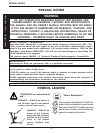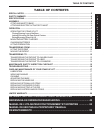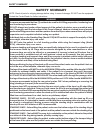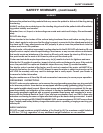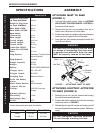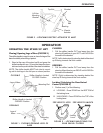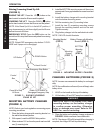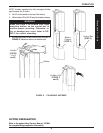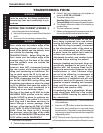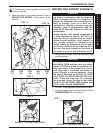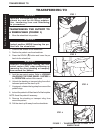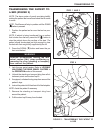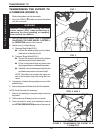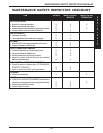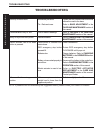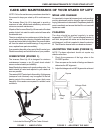
10
TRANSFERRING FROM
T
R
A
N
S
F
E
R
R
I
N
G
F
R
O
M
TRANSFERRING FROM
B. Patient's feet are positioned on the footplate as
shown in STEP 2B of FIGURE 1.
C. The bottom edge of the:
Standing Sling is positioned on the lower back.
Transport Sling is at the base of the patient's spine.
D. The patient's arms are outside of the standing or
transport sling.
E. The rear casters are unlocked.
F. Make sure the legs are in the maximum open posi-
tion and the shifter handle is locked in place.
WARNING
When elevated a few inches off the sur-
face being transferred from and before
moving the patient, check again to make
sure that the sling is properly connected
to the attachment points of the stand up
lift. If any attachments are NOT properly
in place, lower the patient back onto the
surface and correct this problem.
Adjustments for safety and comfort should
be made before moving the patient.
Invacare standing and transport slings are
specifically designed to be used in con-
junction with the Invacare Stand Up Lift.
Slings and accessories designed by other
manufacturers or other Invacare slings
are not to be utilized as a component of
Invacare’s stand up lift system. Use of
these products is prohibited and will void
Invacare’s stand up lift warranty. Use only
genuine Invacare standing and transport
slings and lift accessories to maintain pa-
tient safety and product utility.
If transferring from a wheelchair: Wheel-
chair wheel locks MUST be in the locked
position BEFORE lowering the patient into
the wheelchair.
3. Transferring from a wheelchair - Lock the wheel locks
of the wheelchair.
4. Press the UP (
Ï) button to raise the patient above
the surface (bed, wheelchair or commode) being
transferred from. The patient should be elevated just
high enough to clear the surface with their weight fully
supported by the lift.
NOTE: The lower center of gravity provides stability mak-
ing the patient feel more secure and the lift easier to move.
WARNING
Invacare recommends that two (2) assis-
tants be used for ALL lifting preparation,
transferring from and transferring to pro-
cedures.
LIFTING THE PATIENT (FIGURE 1)
1. Instruct the patient to do the following:
A. Hold onto the hand grips on both sides of the stand
up lift.
B. Lean back into the standing or transport sling.
WARNING
STANDING SLINGS - Before lifting the pa-
tient, make sure the bottom edge of the
standing sling is positioned on the lower
back of the patient and the patient's arms
are outside the standing sling.
TRANSPORT SLINGS - Before lifting the pa-
tient, make sure the bottom edge of the
transport sling is at the base of the spine
and the patient's arms are outside the
transport sling.
Invacare does NOT recommend locking
the rear casters of the stand up lift when
lifting and transferring an individual. Do-
ing so could cause the lift to tip and en-
danger the patient and assistants. Invac-
are DOES recommend that the rear cast-
ers be left UNLOCKED during lifting and
transferring procedures to allow the stand
up lift to stabilize itself when the patient is
initially lifted from and transferred to a
chair, bed or any stationary object.
The legs of the stand up lift MUST be in the
MAXIMUM OPEN position and the shifter
handle LOCKED in place for optimum sta-
bility and safety. If the patient is in a trans-
port sling and it becomes necessary to
move through a narrow passage, close
the legs of the stand up lift ONLY AS LONG
AS IT TAKES TO MOVE THROUGH THE PAS-
SAGE. Once the stand up lift is through
the passage, return the legs of the stand
up lift to the MAXIMUM OPEN position and
LOCK shifter handle IMMEDIATELY.
2. Make sure of the following:
A. Patient's knees are secure against the knee pad.



